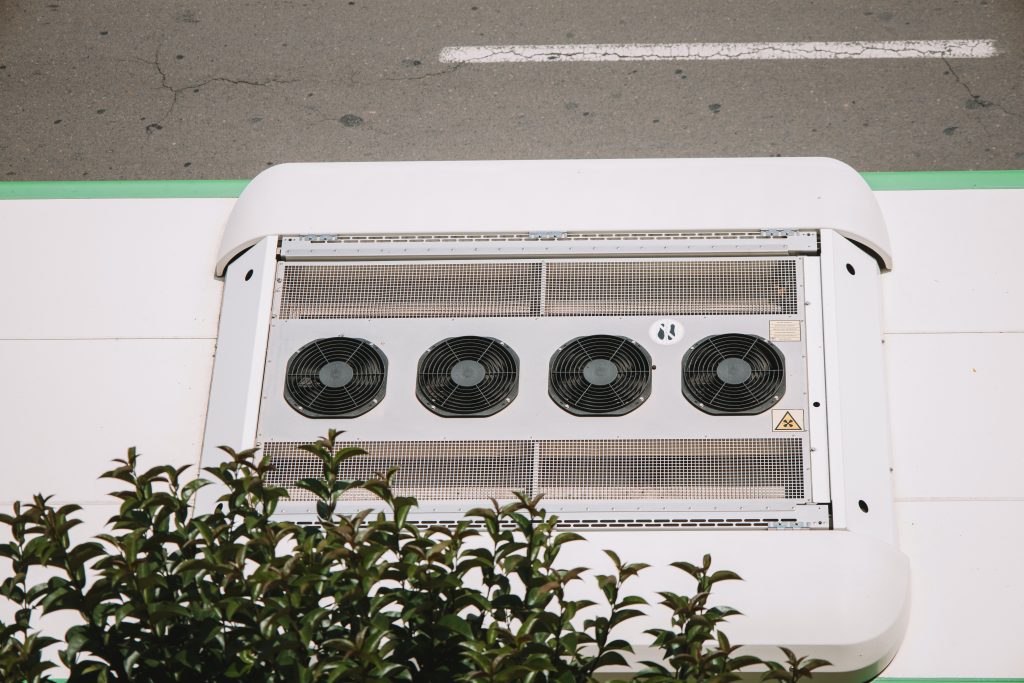In the intricate ecosystem of modern industries, commercial cooling units stand as unsung heroes, often unnoticed by consumers, yet integral to a variety of sectors from food preservation to data center operation. At the heart of these systems, the role of refrigerants is pivotal, acting as the lifeblood that absorbs and discharges heat, thus enabling the cooling process. This article delves into the fascinating world of refrigerants, shedding light on their functionality, historical use, and growing significance amidst global environmental concerns.
Understanding how crucial temperature regulation is across industries helps to appreciate the importance of refrigerants. From keeping perishable goods fresh in supermarkets to ensuring optimal conditions for sensitive medical supplies, refrigerants are key. However, the environmental and economic landscapes dictate a need for more than just effectiveness — sustainability and efficiency are now at the forefront of modern refrigeration considerations.
As we navigate through the complexities of various refrigerant types, their applications, and the global movements toward environmental responsibility, it becomes evident that knowledge and conscientiousness regarding these substances are more important than ever. By understanding the past and present, industries and consumers alike can be better prepared for a future where cooling does not come at the cost of our planet.
Understanding Refrigerants: The Basics
Refrigerants are substances typically found in either a fluid or gaseous state, vital for the heat exchange process in HVAC (Heating, Ventilation, and Air Conditioning) systems, including commercial cooling units. They’re designed to absorb heat from the environment during evaporation and release heat during condensation. This unique characteristic allows refrigerants to effectively regulate temperatures in a contained space, providing the cooling (or heating) necessary for various commercial applications.
The operation of refrigerants is rooted in the principles of phase transition and the thermodynamics of heat transfer. During the cooling cycle, a refrigerant will absorb environmental heat as it changes from a low-pressure liquid to a gas (evaporation), subsequently releasing this absorbed heat when it condenses back into a liquid form under high pressure. This continuous cycle is fundamental to the persistent cooling effect observed in systems such as refrigerators, air conditioners, and large-scale chillers.
A compound’s effectiveness as a refrigerant is measured by several factors: its ability to undergo phase transitions at operational temperatures, its stability, non-corrosiveness, safety (non-toxicity and non-flammability), and, increasingly important, its environmental friendliness. The ideal refrigerant would have a low global warming potential (GWP) and zero ozone depletion potential (ODP), ensuring the least environmental impact possible.
Types of Refrigerants: A Historical Overview
The journey of refrigerant evolution is a storied saga marked by innovation, as well as economic and environmental challenges. The earliest refrigerants, including ammonia (NH3), carbon dioxide (CO2), and sulfur dioxide (SO2), were effective yet sometimes posed toxicity and reactivity issues. The mid-20th century saw the rise of chlorofluorocarbons (CFCs) and hydrochlorofluorocarbons (HCFCs), hailed for their safety and efficacy. However, these compounds were later found to have severe ozone-depleting effects, leading to regulatory shifts.
The revelation of CFCs and HCFCs as environmental hazards spurred the Montreal Protocol, an international treaty designed to phase out ozone-depleting substances. This led to the development and mainstream adoption of hydrofluorocarbons (HFCs), which, while less harmful to the ozone, still present significant global warming potential. Today, the search for the ideal refrigerant continues, driving interest in natural refrigerants like ammonia, CO2, and hydrocarbons, alongside newer formulations like hydrofluoroolefins (HFOs) that promise lower environmental impact.
In this constant balancing act between performance, safety, and environmental impact, the future of refrigerants may lie in blends or entirely new chemical compounds. These alternatives aim to meet the growing demand for cooling solutions that are not only effective and safe but also responsible stewards of our planetary ecosystem.
Environmental Impact: The Ozone Layer and Climate Change
The environmental impact of refrigerants is a topic that has garnered international attention and action, particularly concerning the ozone layer and climate change. Certain refrigerants, notably older types like CFCs and HCFCs, have high Ozone Depletion Potential (ODP), meaning their release into the atmosphere contributes to the degradation of the ozone layer, our planet’s essential shield against harmful ultraviolet radiation.
Additionally, many synthetic refrigerants possess significant Global Warming Potential (GWP), a measure of a substance’s heat-trapping ability in the atmosphere compared to that of carbon dioxide. The release of high-GWP substances like HFCs contributes to the greenhouse effect, an underlying cause of global climate change. This dual threat to our environmental stability has led to concerted international efforts to mitigate the impact, most notably the Montreal Protocol and its subsequent amendments, aimed at phasing out the use of high-ODP and high-GWP refrigerants.
These international agreements underscore a global recognition of our collective responsibility to the environment. They have spurred advancements in refrigerant technology, leading to the creation of substances that aim to minimize, if not altogether eliminate, harm to our ozone layer and climate. The continued adherence to these protocols is not just a matter of legal or economic compliance; it’s a commitment to safeguarding our planet for future generations.
Commercial Cooling Systems: Varying Needs, Varying Refrigerants
Commercial cooling systems are a diverse lot, with requirements that vary significantly depending on the application. From the expansive cooling needs of a supermarket’s refrigeration system to the precision demanded by data centers and medical facilities, the range is vast. Each of these applications presents unique requirements for cooling performance, energy efficiency, safety, and environmental impact, all of which influence the choice of refrigerant.
For instance, large-scale industrial refrigeration may use ammonia due to its high efficiency and low environmental impact, despite its toxicity and flammability. In contrast, residential and automotive air conditioning have traditionally used HFCs for their safety and effectiveness, though their high GWP has prompted a shift toward more sustainable alternatives. These diverse needs have led to a wide array of refrigerant options, each with its own set of trade-offs.
Understanding these trade-offs is essential for making informed decisions about refrigerant use in commercial cooling systems. It requires a holistic view that considers not just the immediate cooling requirements, but also the broader implications for energy consumption, environmental impact, and regulatory compliance. This understanding is crucial for anyone involved in the design, operation, or maintenance of commercial cooling systems.
Maintenance and Handling: Ensuring Efficiency and Safety
Proper maintenance and handling of refrigerants within commercial cooling units are paramount, not only for operational efficiency but also for safety and environmental preservation. Regular maintenance checks ensure the system’s integrity, preventing leaks that could release potentially harmful refrigerants into the atmosphere and detract from system efficiency. Moreover, appropriate handling of these substances is a matter of legal compliance, given the environmental regulations surrounding refrigerant emissions.
Certification and ongoing education for HVAC technicians in the proper handling of refrigerants are crucial. This includes understanding the legal requirements for their recovery, recycling, or disposal. Proper training ensures that these substances do not pose a hazard to technicians or the environment. Additionally, routine maintenance, such as checking for leaks, verifying charge levels, and cleaning or replacing components, is essential for the optimal performance of the cooling system.
Adherence to these practices ensures not only the longevity and efficiency of the commercial cooling system but also the safety of those operating it and the health of our environment. Investing in regular maintenance and qualified professionals ultimately saves money by preventing system failures and avoiding potential legal penalties.
Future Trends: The Move Toward Sustainability
The landscape of refrigerants is evolving, driven by a concerted push toward sustainability. Current research and development efforts are increasingly focused on refrigerants with lower environmental impact, particularly those with low global warming potential (GWP) and zero ozone depletion potential (ODP). This trend is reflected in the gradual phasing out of older refrigerant types with significant environmental consequences, such as CFCs, HCFCs, and HFCs, and the rise of alternatives like HFOs and natural refrigerants.
This move toward sustainability is not just a matter of environmental responsibility; it’s also being driven by regulatory changes. Governments worldwide are implementing more stringent regulations on refrigerants, pushing the industry toward more sustainable options. These trends are likely to continue, if not accelerate, as the global community becomes increasingly aware of and engaged with issues of climate change and environmental protection.
While the future of refrigerants in commercial cooling systems is not yet clear, it is evident that it will be shaped by these concerns over sustainability and regulation. For businesses and industries, staying abreast of these trends and adapting to them will be essential for future success and compliance.
The Ever-Evolving World of Refrigerants
As we’ve journeyed through the complexities of refrigerants, their historical context, functional importance, and the implications of their use, it’s clear that these substances are more than just a technical detail in the workings of commercial cooling units. They’re a critical component with far-reaching environmental, economic, and regulatory implications. Understanding these nuances is essential for anyone involved in the commerce or management of industries reliant on refrigeration or air conditioning.
The current trajectory toward more environmentally friendly refrigerants, guided by both innovation and regulation, signals a future where our cooling needs don’t come at the cost of our planet. This shift is not without its challenges, necessitating new formulations, equipment, and training, alongside global cooperation and compliance.
The world of refrigerants is, indeed, ever-evolving, and it calls for continuous learning, adaptation, and conscientious decision-making from all stakeholders involved. As we look to the future, the goal is clear: efficient, effective cooling solutions that honor our collective responsibility to protect and preserve the environment.









